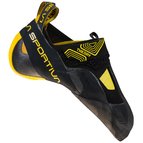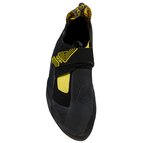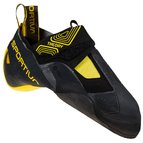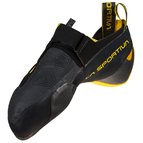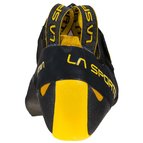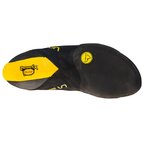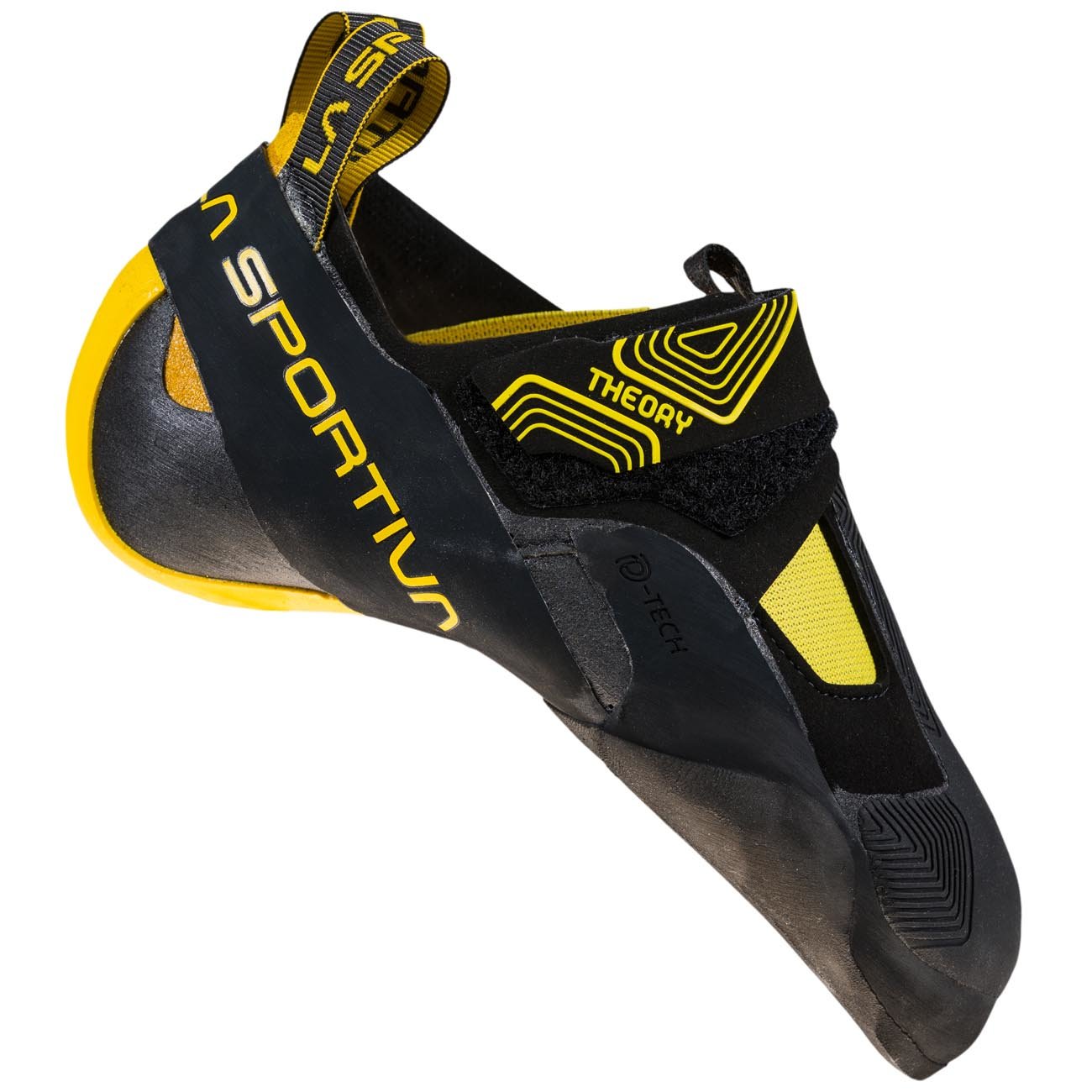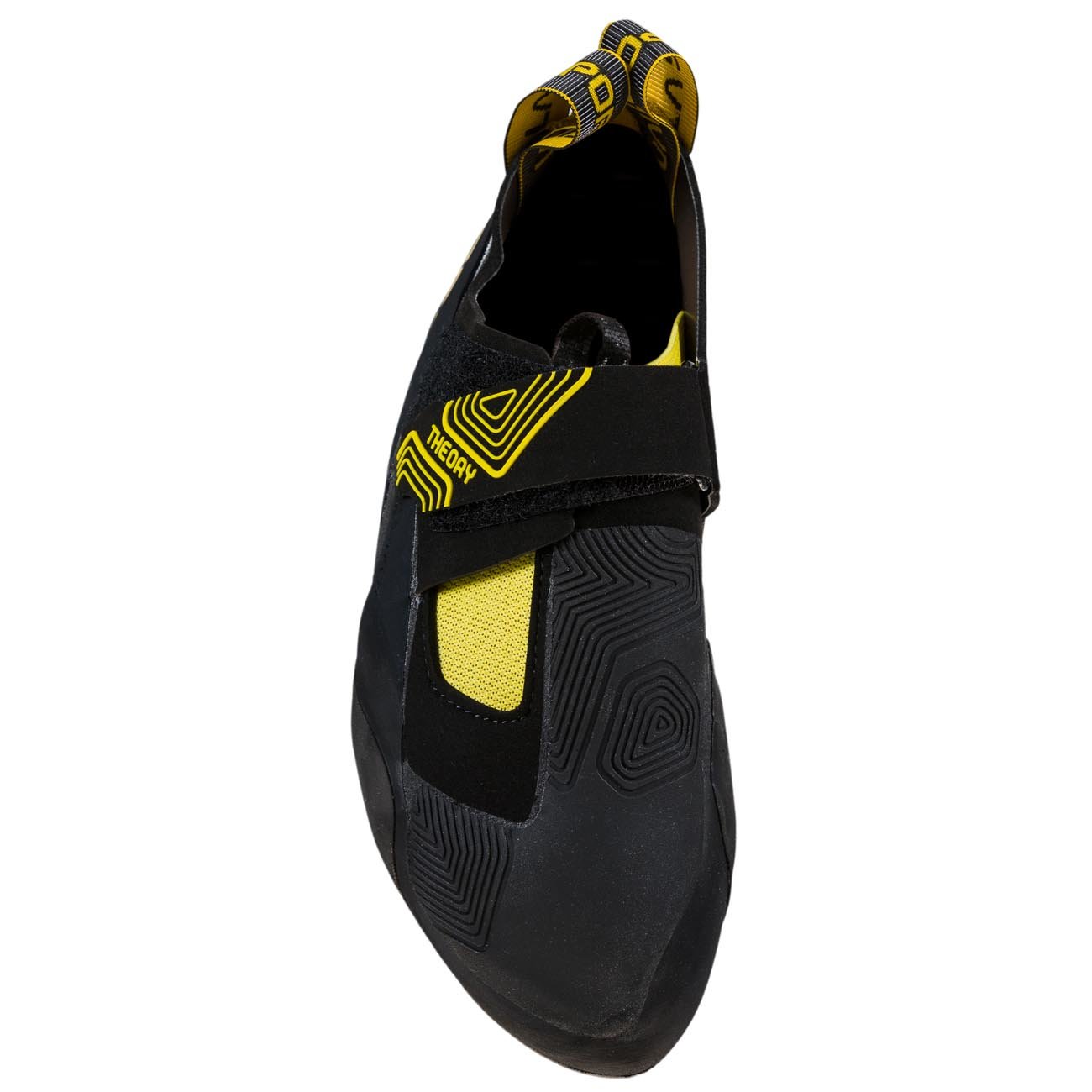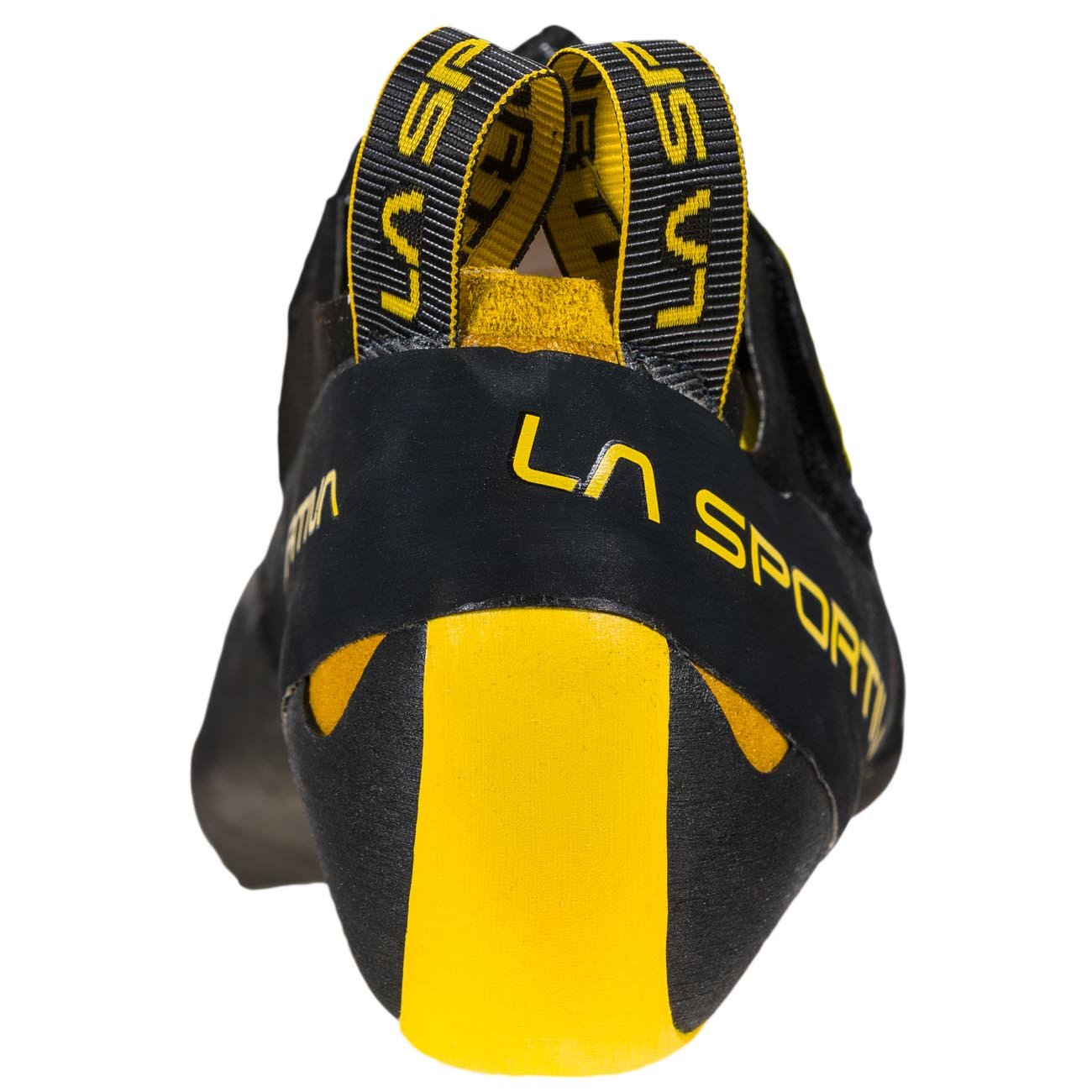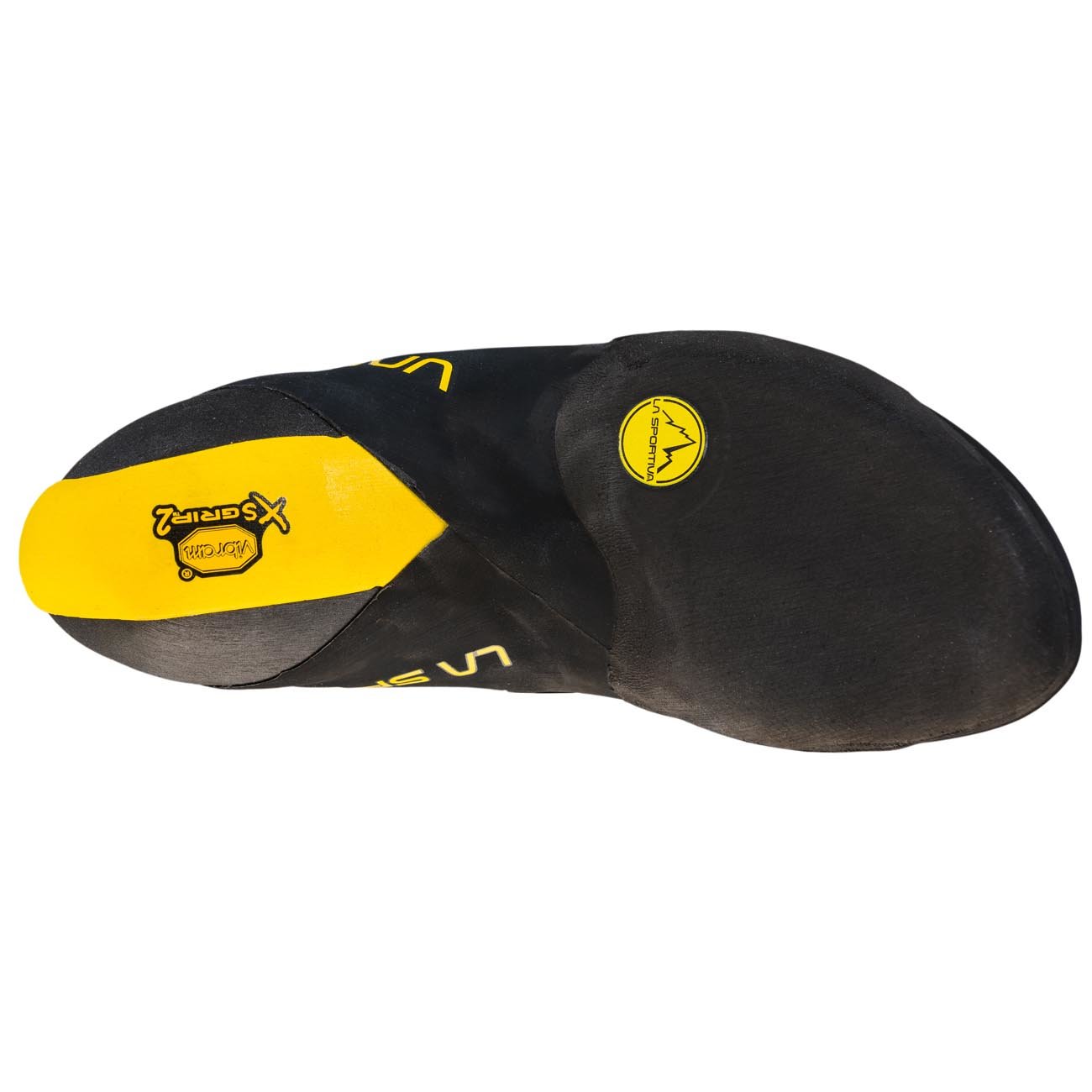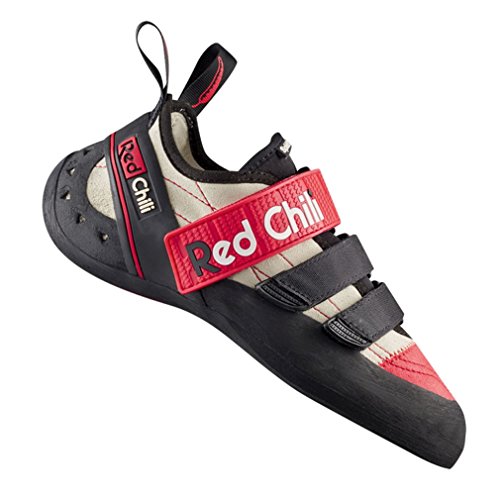
BetaGear
Helping you reach new heights!
1 / 6
La Sportiva Theory
Precision
Comfort
Support
Features
P3 ™
The Permanent Power Platform P3™ is a patented construction system maintaining the downturn shape of the climbing shoe for a longer period of time.
D-Tech ™ Technology
The exclusive Dynamic Technology™ wraps the sole around the corner of the shoe and varying in sole thickness from 4mm in the toe to 1.9mm towards the middle responding to the style of modern climbing holds.
Shoes with similar fit
Technical Details
Outer
Black
Yellow
Shape
Fit
Rigidity
More
Which size fits?
| Fit | Sizing |
|---|---|
| Comfort | - 0.5 |
| star Normal | - 1.5 |
| Performance | - 2 |
We recommend for your profile to pick this shoe around -1.5 sizes smaller than your Street Shoe Size.
Get yours here!
The above contain affiliate links. For more information see the disclosures
All prices in Euro incl. VAT, if necessary plus shipping. Prices and ranking are subject to change at any time. Further information can be found in the notes on pricing
